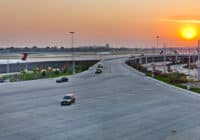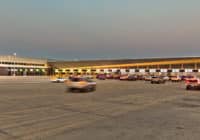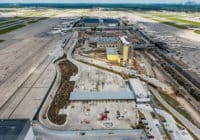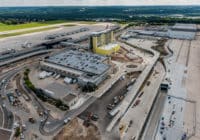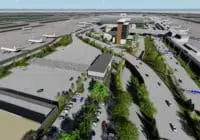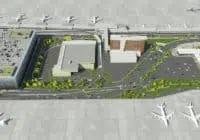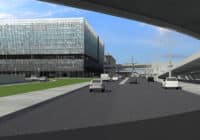Minneapolis-St. Paul International Airport (MSP) Terminal 1-Lindbergh Landside Expansion
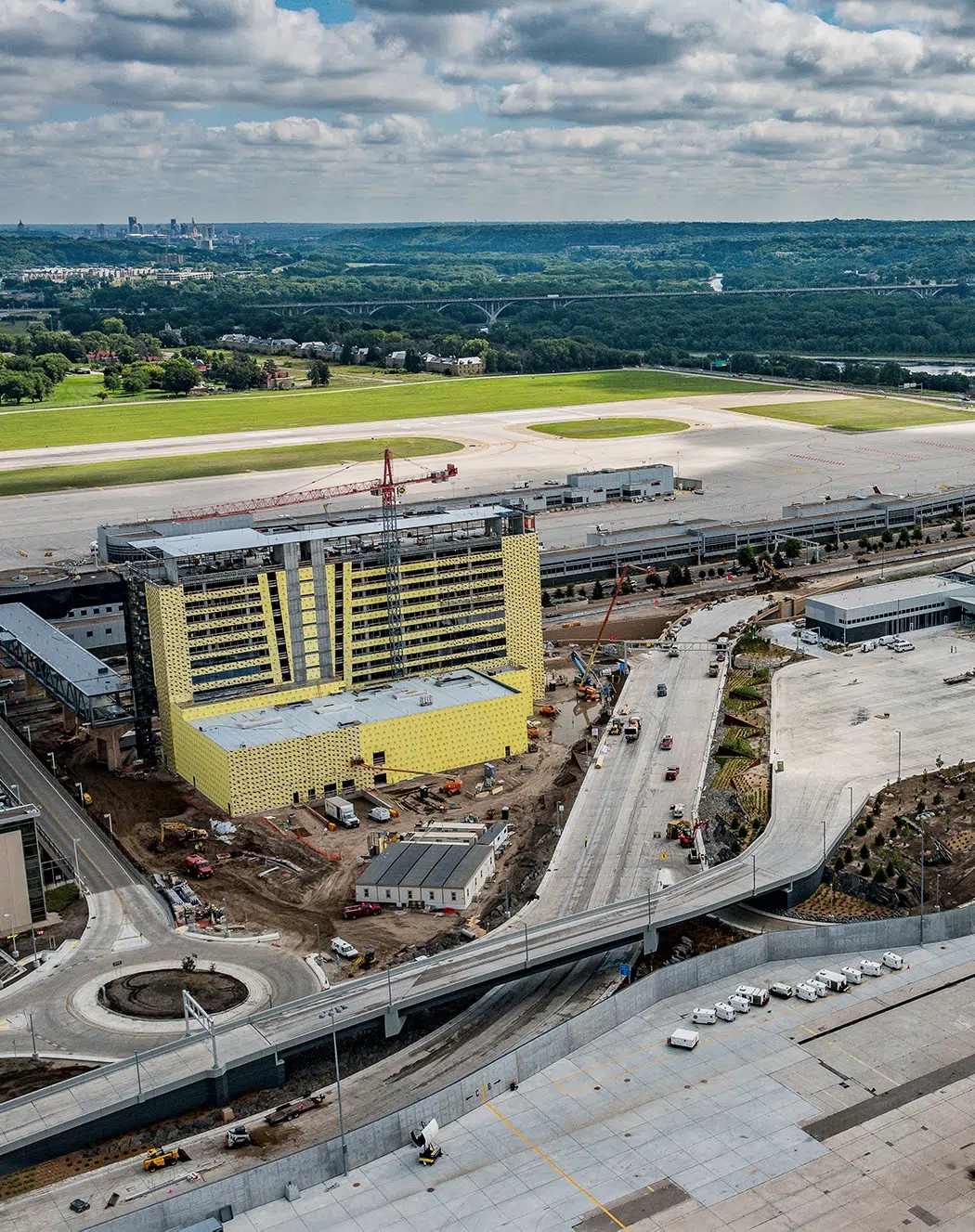
As the 15th busiest airport in the U.S., the Minneapolis-St. Paul International Airport (MSP) is a rapidly growing hub with more than 400,000 landings and takeoffs each year. As a result of this growth, demand for additional parking and landside amenities has significantly increased. The Metropolitan Airports Commission (MAC), which operates MSP, determined it was necessary to expand public parking to meet growing demand—spurring the relocation of existing landside infrastructure and the building a new 5,000-stall parking structure.
Kimley-Horn is currently serving as program manager for this project, leading the overall landside expansion program to increase parking capacity. As part of this program, a series of five projects were recently completed at Terminal 1-Lindbergh to realign the airport exit roadway and relocate the parking exit plaza to make space for a new parking structure. The team analyzed every square foot of the highly constrained landside campus to determine the highest and best use of the space. The realignment and relocation of these facilities resulted in the need for extensive utility modifications, extension and realignment of an active vehicular tunnel, widening of an airport service road, incorporation of two new grade separated vehicle crossings, and relocation of airside support facilities. Due to site and operational constraints, innovative techniques were needed to construct the project support.
In order to serve the needs of airline customers and airport tenants, airport operations could not be shut down. The program required extensive forward-thinking and a deep understanding of operations to keep the airport running at all times and still meet the 20-month construction schedule. Each decision on scope and construction sequence considered utility phasing, impacts to airport operations, design schedules, and construction schedules. The holistic plan was reviewed with airport stakeholders to ensure it was consistent with operational requirements and to inform them of when operations would be impacted.
Maintaining airport operations at all times was critical to keeping the airport’s economic engine moving. The existing landside facilities alone contribute more than $120 million annually to the operating budget for the airport. These new landside facilities are highly visible to millions of customers who drive through the airport each year. Customers can enjoy the new context-sensitive design, which includes locally sourced hardscape materials and native plantings. These elements come together to create a warm welcome to Minnesota for visitors and residents alike.
The Terminal 1-Lindbergh Landside Expansion program has set the bar for planning, design, and construction of landside facilities at space-constrained airports. The project met all of the airport’s operational goals and was delivered under budget and on schedule, all while maintaining airport operations and high levels of customer service. This new infrastructure will serve as a gateway to Minnesota for decades to come.

